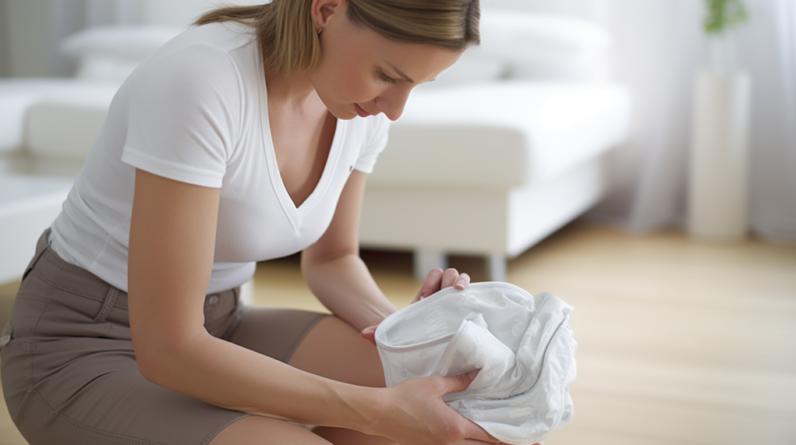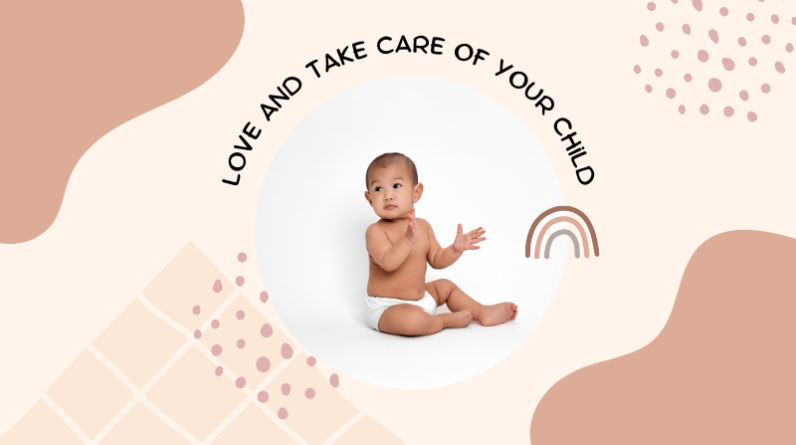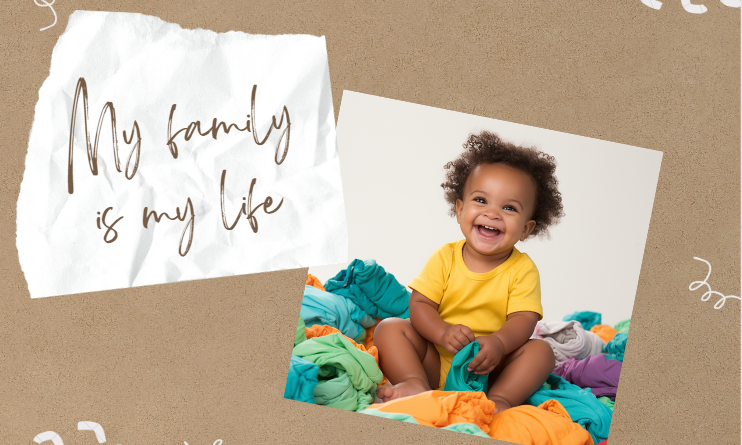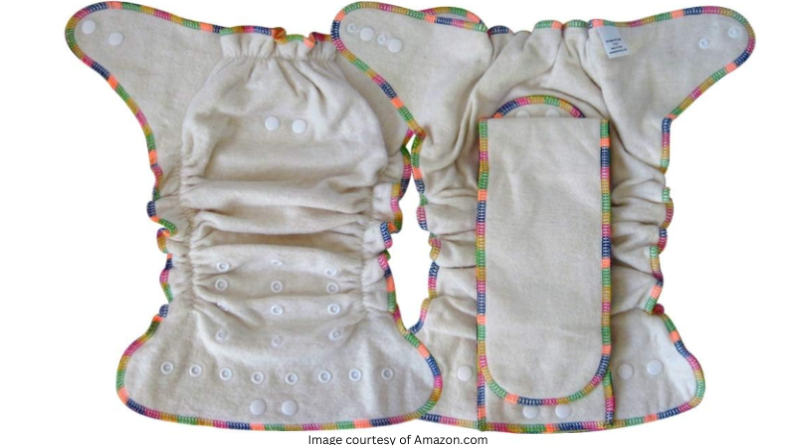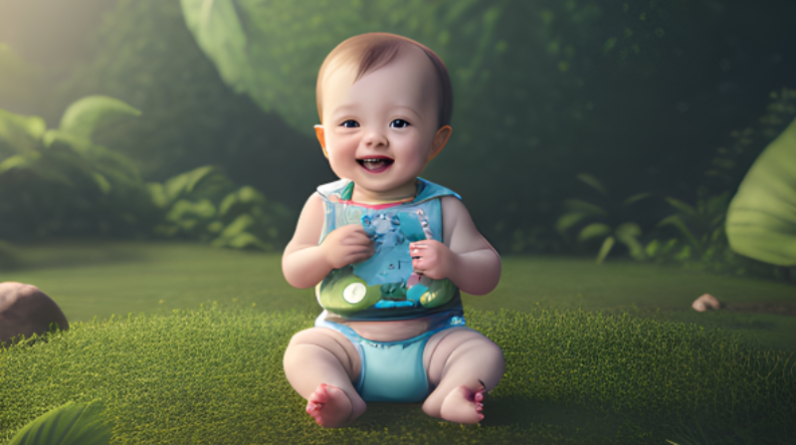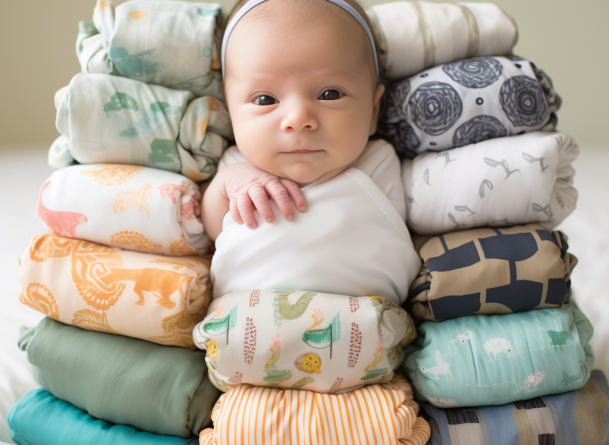
Cloth diapers have experienced a remarkable surge in popularity among new parents, and the reasons are compelling. When it comes to the best newborn cloth diapers, they offer a plethora of benefits that outweigh their disposable counterparts. In this comprehensive guide, we will delve into every aspect you need to know about newborn cloth diapers. From their unique features and various types to insightful reviews and determining the number you’ll need, this guide aims to equip you with the knowledge necessary to make an informed decision. Whether you’re considering the convenience of all-in-one (AIO) newborn cloth diapers or exploring other options, let’s embark on an exploration of the world of newborn cloth diapers!
Reviews of Newborn Cloth Diapers
When choosing the best newborn cloth diapers, it’s beneficial to consider reviews from other parents. Real-life experiences and feedback can provide valuable insights. Online parenting forums, cloth diapering communities, and retailer websites often have reviews and ratings for various brands and styles of newborn cloth diapers. Reading these reviews can help you gauge the performance, quality, and overall satisfaction of other parents who have used specific brands or types of newborn cloth diapers.
Additionally, seek recommendations from friends, family members, or local parenting groups who have firsthand experience with newborn cloth diapers. Their insights and advice can be invaluable in making an informed decision.
The Rising Popularity of Newborn Cloth Diapers
In recent years, cloth diapers have experienced a resurgence in popularity among new parents. This surge can be attributed to several factors. Firstly, cloth diapers are considered to be a more environmentally friendly choice. They reduce waste by eliminating the need for disposable diapers that end up in landfills. Additionally, cloth diapers are often made from organic and sustainable materials, making them an eco-conscious option.
Secondly, cloth diapers are renowned for their exceptional comfort. The soft and breathable fabrics used in their construction prioritize the well-being of your baby’s delicate skin. This can help prevent diaper rash and other irritations that may arise from prolonged exposure to synthetic materials found in disposable diapers.
Furthermore, cloth diapers offer long-term cost savings. While the initial investment may be higher, the reusability of cloth diapers significantly reduces the ongoing expenses associated with disposable diapers. With proper care and maintenance, cloth diapers can be reused for multiple children or even resold after use, providing further financial benefits.
Examples of Popular Newborn Diaper Brands
When it comes to these types of diapers, several brands have established themselves as leaders in the industry. Here are some of the best newborn cloth diapers brands that parents rave about:
- Thirsties
- Trensom
- GroVia
- Alva Baby
- Thank U Mom
- Happy Flute
- Smart Bottoms
- CSKB
- Kawaii Baby
- Rumparooz
- Sloomb
Features of Newborn Cloth Diapers
These diapers are designed with a range of features to ensure comfort, functionality, and convenience for both babies and parents. Understanding these features will help you choose the best newborn cloth diapers that meet your specific needs. Here are the key features to consider:
- Size and Fit: These cloth diapers are specifically designed to accommodate the smaller size and unique shape of newborn babies. They feature a trim and snug fit to prevent leaks and provide maximum comfort. Look for newborn cloth diapers that offer adjustable sizing options, such as snaps or hook and loop closures, to ensure a secure and customized fit as your baby grows.
- Soft and Breathable Materials: The materials used in these type of diapers are carefully chosen to prioritize the comfort of your baby’s delicate skin. Most newborn cloth diapers are made from natural fibers such as cotton, bamboo, or hemp, which are soft, breathable, and hypoallergenic. These materials help prevent diaper rash and skin irritations, allowing your baby to stay dry and comfortable.
- Absorbent Inner Layers: They feature absorbent inner layers that are designed to quickly and effectively absorb moisture. These layers may consist of microfiber, cotton, bamboo, or a blend of these materials. The absorbent layers help keep your baby’s skin dry and minimize the risk of leaks.
- Waterproof Outer Layer: To prevent leaks and provide an additional layer of protection, newborn cloth diapers have a waterproof outer layer. This layer is typically made from a polyurethane laminate (PUL) or a similar waterproof material. It acts as a barrier, keeping moisture contained within the diaper while allowing airflow to keep your baby’s skin dry.
- Leg Gussets: This type of cloth diapers are equipped with leg gussets, which are elasticized features around the leg openings. Leg gussets provide a secure fit and help contain messes by preventing leaks around the legs. This feature is particularly beneficial during the early weeks when newborns have frequent bowel movements.
- Umbilical Cord Cutout: Some newborn cloth diapers have a specially designed umbilical cord cutout to ensure comfort and proper healing. This feature takes into consideration the sensitive area around the umbilical cord stump. The cutout allows the diaper to sit below the stump without rubbing or irritating it, promoting faster healing and reducing discomfort for your newborn.
- Closure Options: These diapers offer different closure options to suit your preference and convenience. The two main closure types are:
- Snaps: Snaps are durable and secure closures that provide an adjustable fit. They allow you to fasten the diaper tightly or loosen it as needed, ensuring a snug and comfortable fit for your baby.
- Hook and Loop: Hook and loop closures, also known as Velcro or Aplix, offer quick and easy fastening. They are convenient for fast diaper changes and provide a customizable fit. However, they may wear out over time and require occasional maintenance.
- Stay-Dry Liners: Some newborn cloth diapers come with stay-dry liners. These liners are typically made from microfleece or suede cloth and are designed to keep your baby’s skin feeling dry by wicking moisture away from the skin and into the absorbent layers of the diaper. Stay-dry liners are particularly useful for babies who are sensitive to wetness or prone to diaper rash.
- Double Gussets: Double gussets refer to an additional set of elasticized features around the leg openings of newborn cloth diapers. They provide an extra layer of protection against leaks by creating a snug seal around the thighs. Double gussets are especially useful for containing messes during the newborn stage when babies have frequent and loose bowel movements.
- Cute and Stylish Designs: These type of diapers often come in a wide array of adorable and stylish designs. From vibrant colors and playful patterns to themed prints, these diapers allow you to showcase your baby’s personality and add a touch of fun to diaper changes. The variety of designs available makes diapering an enjoyable and fashionable experience.
Understanding the features of newborn cloth diapers will help you make an informed decision when selecting the best diapers for your baby. Consider your baby’s needs, your preferences, and the specific features that align with your diapering goals. By choosing this type of diapers with the right combination of features, you can provide your baby with a comfortable and reliable diapering solution.
The Benefits of Newborn Cloth Diapers
These diapers offer a host of advantages over their disposable counterparts. Understanding these benefits will help you make an informed decision when choosing the best option for your baby. Here are some key advantages of newborn cloth diapers:
- Gentle on Delicate Skin: Newborn cloth diapers are designed with the comfort of your baby’s delicate skin in mind. The use of natural and breathable materials helps prevent skin irritations and rashes, keeping your baby comfortable and happy.
- Adjustable Sizing: One notable feature of newborn cloth diapers is their adjustable sizing. Most newborn cloth diapers come with snaps or hook and loop closures that allow you to customize the fit according to your baby’s size and shape. This eliminates the need to purchase different sizes as your baby grows.
- Eco-Friendly: By choosing newborn cloth diapers, you’re making a positive environmental impact. Disposable diapers contribute to immense waste and pollution, whereas cloth diapers can be reused, reducing the strain on landfills and conserving resources.
- Cost-Effective: While the upfront cost of newborn cloth diapers may be higher than disposable diapers, the long-term savings are significant. The reusable nature of cloth diapers means you won’t need to continuously purchase disposable diapers, resulting in substantial cost savings over time.
Specific Sizing and Fit Considerations for Newborns
Getting the sizing and fit right is crucial when it comes to these type of diapers. Here are some considerations to keep in mind:
- Weight Range: Newborn diapers are designed to fit babies within a specific weight range. Typically, newborn cloth diapers are suitable for babies weighing between 6 and 12 pounds.
- Adjustable Closures: Look for newborn cloth diapers with adjustable closures, such as snaps or hook and loop (Velcro). These closures allow you to achieve a snug fit and accommodate your baby’s growth.
- Leg Gussets: Opt for newborn diapers with stretchy leg gussets. These elasticized features provide a secure fit and help prevent leaks around your baby’s legs.
- Umbilical Cord Cutout: Some of these diapers have a specially designed umbilical cord cutout to ensure comfort and proper healing. This feature is particularly beneficial during the early weeks.
Absorbency Levels and Customization Options
These type of diapers come with varying absorbency levels and customization options. Take note of the following:
- Absorbency: Most of these cloth diapers have built-in absorbency. However, for heavy wetters or extended periods, additional inserts or boosters can be used to increase absorbency. These inserts are available in different materials, such as hemp or bamboo, and offer varying levels of absorbency.
- Customization: Cloth diapers allow for customization based on your baby’s needs. You can experiment with different insert combinations, layering options, or specific fabrics to achieve the desired level of absorbency and comfort.
Care Instructions for Newborn Diapers
Proper care and maintenance are essential to prolong the lifespan of your cloth diapers. Follow these care instructions:
- Prepping: Before using your diapers, it’s important to prep them. This involves washing them multiple times to enhance absorbency and remove any manufacturing residues.
- Washing Routine: Establish a washing routine that suits your needs. Typically, it involves a cold rinse, a hot wash with a cloth-diaper-friendly detergent, and an additional rinse cycle. Avoid using fabric softeners or bleach as they can affect absorbency and the overall performance of the diapers.
- Drying Methods: These diapers can be air-dried or machine-dried, depending on the manufacturer’s instructions. High heat should be avoided, as it can damage the diapers and elastic components.
- Stain Removal: Promptly treat stains by rinsing or soaking the diapers. Sunning them can also help naturally bleach out stains. For persistent stains, consider using a cloth-diaper-safe stain remover.
- Common Diapering Issues: Address common diapering issues, such as diaper rash or detergent build-up, promptly. Adjusting the washing routine, using diaper liners, or switching to a different detergent can help mitigate these problems.
Types of Newborn Cloth Diapers
When it comes to this type of cloth diapers, there are several types available to cater to different preferences and needs. Understanding the various options will help you choose the best fit for your baby. Here are the common types of newborn cloth diapers:
- All-in-One (AIO) Newborn Cloth Diapers: AIO diapers are a popular choice for their convenience and simplicity. They consist of a waterproof outer layer and an absorbent inner layer sewn together, creating a one-piece diapering system. AIO diapers are easy to use and require no additional inserts or covers.
- Pocket Newborn Cloth Diapers: Pocket diapers feature a waterproof outer shell with a pocket opening. You can insert absorbent inserts or boosters into the pocket, allowing for customization of absorbency levels. Pocket diapers are versatile and quick-drying.
- Prefold and Flat Newborn Cloth Diapers: Prefold and flat diapers are traditional options that involve folding and fastening with diaper pins or Snappis. They require a separate waterproof cover to contain leaks. Prefold and flat diapers are economical and versatile, as they can be used as burp cloths or inserts as your baby grows.
- Fitted Newborn Cloth Diapers: Fitted diapers are contoured diapers that require a separate waterproof cover. They provide a snug and comfortable fit, and the absorbency can be customized by adding inserts. Fitted diapers are an excellent choice for overnight use or heavy wetters.
- Hybrid Newborn Cloth Diapers: Hybrid diapers combine the benefits of cloth and disposable diapers. They consist of a reusable cloth cover and disposable inserts. Hybrid diapers offer the flexibility to use cloth inserts at home and switch to disposable inserts when traveling or for added convenience.
Determining the Number of Newborn Cloth Diapers You’ll Need
One common question that arises when considering newborn cloth diapers is, “How many do I need?” The number of diapers required will depend on several factors. Here are some considerations to help you determine the ideal quantity:
- Frequency of Diaper Changes: Newborns typically require frequent diaper changes, often ranging from 8 to 12 changes per day. Keeping this in mind, calculate the number of diapers needed for a day based on your baby’s specific needs.
- Washing Frequency: Determine how often you plan to do laundry. Most parents wash newborn cloth diapers every one to three days. Having enough diapers to last between washes ensures a constant supply.
- Extras for Emergencies: It’s wise to have a few additional diapers of this type as backup in case of unexpected emergencies or delays in laundry. These extras can provide peace of mind and ensure you always have an adequate supply.
- Consideration for All-in-One (AIO) Newborn Cloth Diapers: If you opt for AIO newborn cloth diapers, you may need a slightly higher quantity due to their all-inclusive nature. Since AIO diapers cannot be disassembled for separate drying, having extra AIO diapers will allow for a rotation system while some diapers are in the laundry.
Taking these factors into account, a general guideline for the number of diapers needed ranges from 20 to 30 diapers. However, it’s essential to consider your baby’s specific needs, washing routine, and personal preferences when determining the appropriate quantity.
Conclusion
Newborn cloth diapers offer numerous benefits that make them an attractive choice for parents. From their positive environmental impact to the comfort they provide for your baby’s delicate skin, cloth diapers offer an alternative to disposable options. By exploring the different types, reading reviews, and considering your baby’s needs, you can choose the best cloth diapers for your family.
Whether you opt for the convenience of all-in-one (AIO) this type of cloth diapers or prefer other styles like pocket, prefold, flat, or fitted diapers, the market offers a wide range of options to suit your preferences. Additionally, don’t forget to determine the number of diapers you’ll need based on factors such as diaper change frequency and washing routine.
Embracing this type of diaper allows you to prioritize sustainability, comfort, and cost-effectiveness. By making an informed decision, you’re taking a significant step toward providing your baby with a diapering solution that is both gentle on their skin and beneficial for the planet. Enjoy the journey of cloth diapering and cherish those precious moments with your newborn!


